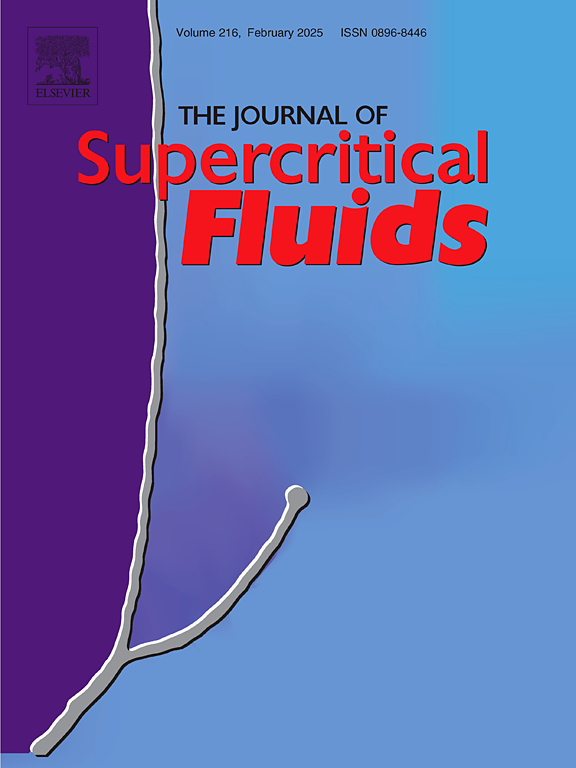Supercritical CO2 assisted bioMOF drug encapsulation and functionalization for delivery with a synergetic therapeutic value
IF 3.4
3区 工程技术
Q2 CHEMISTRY, PHYSICAL
引用次数: 0
Abstract
Despite the impressive characteristics of biological metal organic frameworks (bioMOFs) for their use as drug delivery systems (DDs), there are still some parameters related to their structural stability and processing routes that have decelerated their realistic application in this field. Both drawbacks are unraveled in this work for the microporous bioMOF CaSyr-1 by using supercritical CO2 (scCO2) to load the bioMOF with the anti-tubercular isoniazid (INH) drug, and functionalize its external surface with a hydrophobic protective layer of stearate (S). The hydrophobicized CaSyr-1(INH)/S vehicle is further coated with a neutral surfactant (PS60) to enhance the wettability of the system. In vitro tests, related to drug carrier biocompatibility and drug release in body simulated fluids, are performed to demonstrate potential prospective of the designed DDs in pharmacy. The synthetized product displayed total biocompatibility even at high concentrations, and the particle size and dissolution rate showed to be adequate for pulmonary administration.
超临界二氧化碳辅助生物MOF药物封装和功能化,实现具有协同治疗价值的递送
尽管生物金属有机框架(bioMOFs)在用作给药系统(DDs)方面具有令人印象深刻的特性,但仍有一些与结构稳定性和加工路线相关的参数阻碍了它们在这一领域的实际应用。本研究利用超临界二氧化碳(scCO2)将抗结核异烟肼(INH)药物装入微孔生物MOF CaSyr-1,并在其外表面添加疏水性硬脂酸盐(S)保护层,从而解决了这两个问题。疏水性 CaSyr-1(INH)/S 载体上还涂有中性表面活性剂(PS60),以增强系统的润湿性。为了证明所设计的 DDs 在制药领域的潜在前景,我们进行了与药物载体生物相容性和药物在模拟体液中的释放有关的体外测试。合成的产品即使在高浓度下也能显示出完全的生物相容性,其粒度和溶解速率也足以满足肺部给药的需要。
本文章由计算机程序翻译,如有差异,请以英文原文为准。
求助全文
约1分钟内获得全文
求助全文
来源期刊

Journal of Supercritical Fluids
工程技术-工程:化工
CiteScore
7.60
自引率
10.30%
发文量
236
审稿时长
56 days
期刊介绍:
The Journal of Supercritical Fluids is an international journal devoted to the fundamental and applied aspects of supercritical fluids and processes. Its aim is to provide a focused platform for academic and industrial researchers to report their findings and to have ready access to the advances in this rapidly growing field. Its coverage is multidisciplinary and includes both basic and applied topics.
Thermodynamics and phase equilibria, reaction kinetics and rate processes, thermal and transport properties, and all topics related to processing such as separations (extraction, fractionation, purification, chromatography) nucleation and impregnation are within the scope. Accounts of specific engineering applications such as those encountered in food, fuel, natural products, minerals, pharmaceuticals and polymer industries are included. Topics related to high pressure equipment design, analytical techniques, sensors, and process control methodologies are also within the scope of the journal.
 求助内容:
求助内容: 应助结果提醒方式:
应助结果提醒方式:


